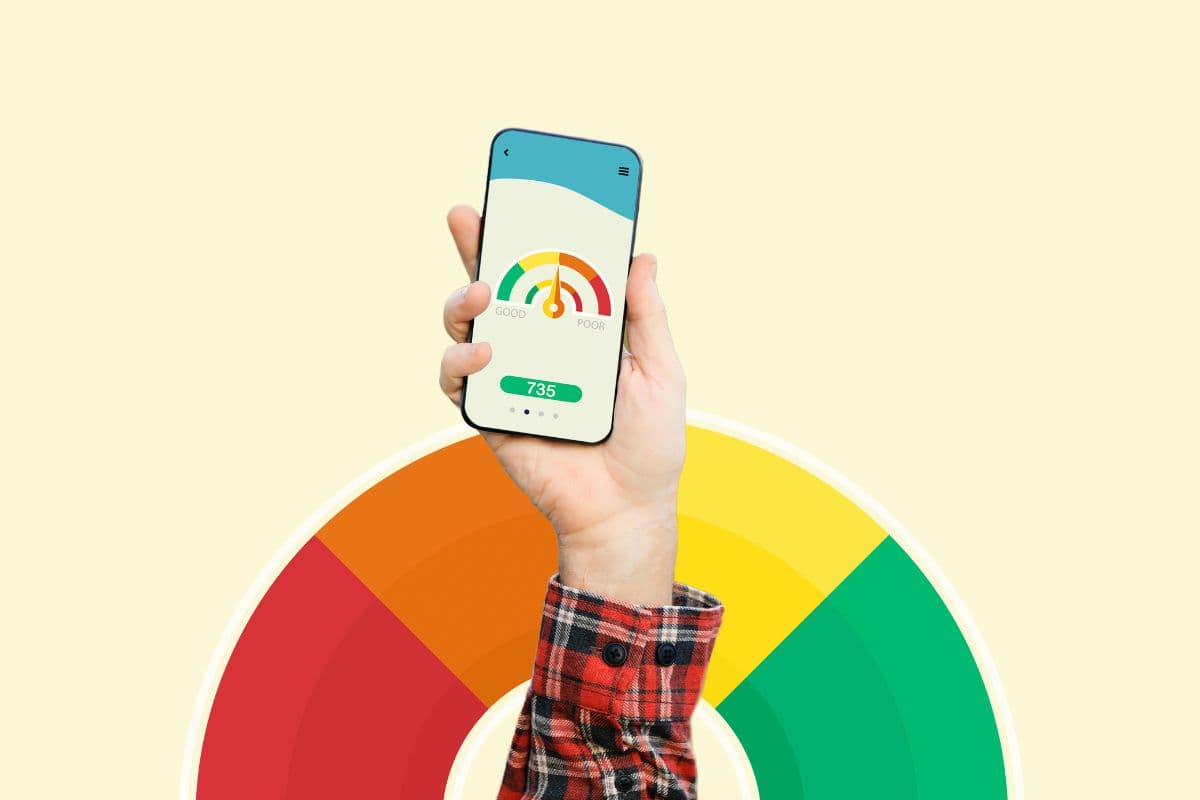Credit Score Ranges in Canada: How to Interpret Your Score
By Maude Gauthier | Published on 20 Feb 2024

If you’ve recently checked your credit score, you might find yourself wondering what the number means. Or maybe you want to know how you can increase your credit score so you can achieve your financial goals. Different lenders have different ideas about what credit score is good versus excellent, or average versus poor. Some lenders as well as companies like ClearScore provide information and tips about your score. We are here to clear things up. We’ve laid out some general guidelines so you know what to expect. We’ve also provided some tips on how to move yourself up through the credit score ranges.
[Offer productType=”OtherProduct” api_id=”658093db0882fc3599b2b6ad”]Score of 659 or less
A credit score between 300 and 659 is generally considered below average. In this score range, it is difficult to get certain types of credit accounts. This is particularly true if the amounts are large. For example, it is more difficult to obtain a car loan or a traditional mortgage loan without mortgage loan insurance.
Additionally, you will not qualify for an insured mortgage. An insured mortgage is a loan with a down payment of less than 20%. However, a score of 600 should allow you to qualify for lower-tier credit cards and loans. These types of credit cards are often called credit building products or cards. You can find them when you compare credit cards. Just keep in mind that such a card will have a lower credit limit and a higher interest rate.
If your credit score is below 600, you may not qualify for most traditional credit cards available on the market. A good alternative is a secured credit card, like Neo‘s, or a prepaid credit card, like KOHO‘s.
How to achieve a credit score of 659?
If your credit score is poor, review your credit utilization and payment history. If you constantly miss payments or go over the limits on your credit cards, your credit score will suffer. If you’re just starting to rebuild your score, make a list of all your credit accounts, payment due dates and balances owed. This will allow you to establish an adequate budget. By staying organized, it’s easier to ensure you don’t forget anything and accidentally lower your credit score.
What if you don’t currently have a credit repair credit card, or any other open loan? You may want to apply for a credit card designed to help you rebuild your credit. It may seem counterintuitive to take out credit when you have bad credit. However, these cards are designed to help you improve your credit score. They are easy to obtain, usually have additional terms to ensure you will repay all the money, and can show future lenders that you are now credit responsible.
660-724 credit score
If your credit score is between 660 and 724, you generally qualify for most types of loans. However, you won’t always be able to benefit from competitive interest rates and will generally only be approved for a modest loan size.
Above 680, most lenders consider you to be in the “good” category. You will easily qualify for most types of loans, although your score may not be high enough for you to qualify for the lowest interest rates. You may also qualify for a mortgage at this stage. By law, you must have a credit score of 680 or higher to get an insured mortgage (that is, a mortgage with a down payment of less than 20%).
If you need to access credit like a large loan or are hoping to purchase a home, a better interest rate can save you thousands of dollars in interest charges. We can talk about tens of thousands of dollars on a mortgage loan.
You don’t believe us? Use the Hardbacon Mortgage Calculator and Car Loan Calculator to see the difference your interest rate makes.
How to achieve a 724 credit score?
While you may not necessarily qualify for the most competitive interest rates, a score that approaches 700 will give you access to a wide variety of loans. Additionally, if you manage your finances well, make your payments on time, and don’t take out new loans, it will be relatively easy for you to move into the “very good” credit score category relatively quickly.
To reach this range, you will need to develop good credit building habits. Keep up with your payments and avoid applying for new loans, especially if you have a large loan application coming up, such as a mortgage application.
Credit score between 725 and 759
Once the 725 mark is crossed, you will obtain advantageous loans more easily, such as low-rate car loans. Make sure your older credit accounts remain open, regularly check and report any fraudulent activity, and continue to establish good financial habits.
760 or higher
Once your credit score is 760 or higher, you start to fall into the “excellent” category. Although the exact parameters vary depending on your credit reporting company, this generally means that your credit report only has the occasional minor problem. A score of 780, for example, only requires an 86% to 91% perfect credit score. So there is a little leeway for setbacks.
How to achieve a 760 credit score?
To achieve a score of 760, you must eliminate all potential problems from your credit profile. Avoid constantly opening credit cards and exposing yourself to frequent checks. If you have large balances on your credit cards, prioritize paying them off, which will improve your credit utilization.
Use our Debt Payoff Calculator (Avalanche Method) to help you pay off debt and save on interest charges.
800 and above
If you want to give yourself more flexibility, you can aim for a score of 800 which will almost certainly guarantee you access to low-interest loans. Although your score can technically still improve, it is high enough that you will have no problem getting loans with the lowest interest rate possible, as long as the principal matches your income level.
Get the best rates with Harbacon’s mortgage, credit card and loan comparison tools.
A near-perfect score requires a long-standing payment history and a diversified credit portfolio. Since it can be difficult to work on these two factors in the short to medium term, you will need to accumulate all the points you can get through other factors, such as keeping your credit utilization as low as possible.
How to achieve an 800 credit score?
Getting a credit score between 800 and 849 can be difficult. If you’re aiming for such a high score, it’s a good idea to order a detailed credit report to understand exactly what factors are being held against you. Then work to correct anything you can, such as high credit utilization. Avoid hard credit checks and wait out the time limit for any damage to your credit score. Slowly but surely you will reach a rating of 800.
900 credit score
It is technically possible to obtain a sky-high credit score. While there is virtually no difference between a credit score of 898 versus 900 beyond bragging rights, you’ll still have access to a wide variety of loans and extremely competitive interest rates.
Getting to a perfect credit score of 900
If you’re committed to getting a 900 credit score, you’ll need to buckle up for a long ride. In addition to all the steps recommended above, we highly recommend that you take out a variety of loan types to diversify your credit profile, then avoid any new hard credit checks.
You’ll also need to play the long game. It’ll likely take a year or two for the hard inquiries from your different loans to stop impacting your score. In the meantime, set up automated payments so that you won’t risk accidentally missing a payment and having your score drop.
